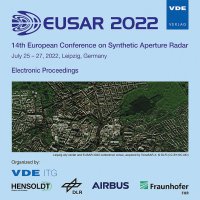Towards an improved Radiometric Accuracy for Sentinel-1 with optimized Elevation Antenna Patterns
Conference: EUSAR 2022 - 14th European Conference on Synthetic Aperture Radar
07/25/2022 - 07/27/2022 at Leipzig, Germany
Proceedings: EUSAR 2022
Pages: 5Language: englishTyp: PDF
Authors:
Schmidt, Kersten; Schwerdt, Marco (Microwaves and Radar Institute, German Aerospace Center (DLR), Oberpfaffenhofen, Germany)
Hajduch, Guillaume; Vincent, Pauline (Collecte Localisation Satellites, CLS, Plouzané, France)
Recchia, Andrea (Aresys s.r.l., Milano, Italy)
Miranda, Nuno (European Space Agency (ESA-ESRIN), Frascati, Italy)
Abstract:
The paper presents the optimization method and results for deriving new elevation antenna patterns in order to improve the radiometric accuracy of Sentinel-1 SAR systems (S1A and S1B). For this purpose, the antenna patterns have been optimized by minimizing assessment parameters derived from γ profiles acquired over the Amazon rainforest using TOPS modes (IW and EW) with different polarization channels and acquisitions using several relative orbits (tracks). The optimization aims to reduce the (γ) variations within sub-swathes, but also to reduce beam-to-beam gain offsets and variations within the entire swathes. The new derived antenna patterns have been used for the Sentinel-1 SAR data processing after their releases. Furthermore, the radiometric accuracy has been verified with point target measurements for the IW mode. It has been found that backscatter differences between S1A and S1B match well between both target types for IW mode with VV and VH polarizations where SAR images are acquired on a regular basis over the DLR calibration site. But higher biases have been found for HH and HV polarisations where only a few acquisitions are available.


